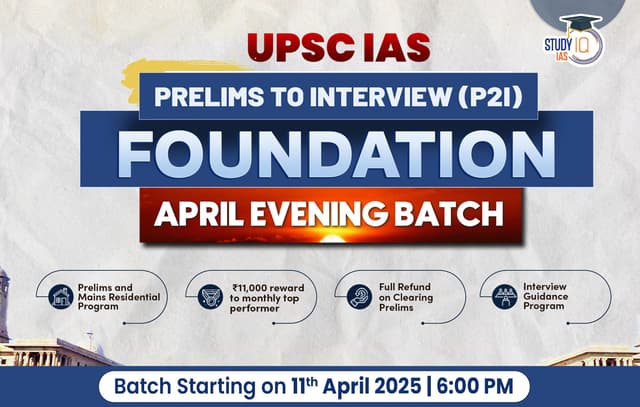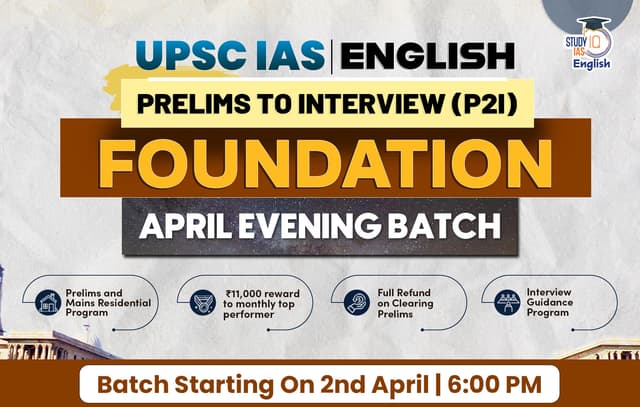Table of Contents
Context: Judicial corruption undermines public trust and weakens the foundation of the rule of law. India has put in place several formal and informal mechanisms to uphold judicial integrity and accountability. However, the effectiveness of these mechanisms remains a subject of debate.
More in News
According to the latest C-Voter-India Today survey:
- Only about 30% of people surveyed said they fully trust the judiciary.
- 12% trust it only somewhat.
- Nearly 48% reported having no trust in it at all.
Current Mechanisms to Combat Judicial Corruption
Check out the Current Mechanisms to Combat Judicial Corruption in India:
| Mechanism | Description | Legal Basis / Authority | Limitations |
| Impeachment Process | Removal of judges on grounds of proven misbehaviour or incapacity through a rigorous parliamentary procedure. | Article 124(4) & (5), Judges (Inquiry) Act, 1968 | Rarely used; politically difficult; no judge has ever been impeached successfully. |
| In-House Inquiry Procedure | Internal mechanism to examine complaints against judges via a committee of judges; recommendations may include warnings or resignation. | Established by Supreme Court (1997 guidelines) | Non-statutory; lacks transparency; no fixed standards for reporting findings publicly. |
| Contempt of Court Law | Used to prevent actions that lower the authority of the judiciary or obstruct the administration of justice. | Contempt of Courts Act, 1971 | Often invoked to silence criticism; can suppress good-faith scrutiny of the judiciary. |
| Collegium System (Appointments) | Judges appoint judges; High Courts and Supreme Court collegiums make recommendations; executives can return names. | Evolved through judicial decisions (e.g., 1993 SC) | Lacks transparency and accountability; executive interference in appointments persists. |
| Financial Disclosure (Ethics Practice) | Judges are encouraged to voluntarily declare their assets; some courts publish these declarations. | Norm-based; not statutory | No legal compulsion; inconsistent disclosures; lacks verification mechanism. |
| Judicial Standards & Accountability Bill | Aimed to institutionalize enforceable conduct standards and oversight committees for judges. | Introduced in 2010 (Lapsed in 2014) | Never passed; hence, no formal code of conduct or statutory grievance redressal body for the judiciary. |
| CAG, RTI & Media Vigilance | CAG reports reveal administrative lapses; RTI allows limited access to court info; media pressure spurs action. | RTI Act, 2005; Comptroller & Auditor General reports | Indirect and reactive; RTI coverage is limited; often depends on media/public outrage. |
Arguments in Favour (Mechanisms Are Effective to Some Extent)
- Impeachment preserves judicial independence: The high threshold for impeachment protects judges from political vendetta, maintaining separation of powers.
- In-house inquiry procedure exists: The judiciary has established an internal mechanism to deal with misconduct without external interference, allowing some checks and balances.
- Instances of transparency are increasing: The Supreme Court’s proactive disclosure (e.g., in the Justice Varma case) signals a shift towards greater openness.
- Scope for collegium transparency has emerged: Under CJI D.Y. Chandrachud, collegium recommendations were publicly explained — a move toward accountability (though now discontinued).
- Checks through informal peer systems: The legal fraternity operates via peer review and whispers of misconduct often circulate long before formal action, hinting at informal checks.
Arguments Against (Mechanisms Are Ineffective or Weak)
- Impeachment is nearly impossible: The political threshold (two-thirds majority) makes impeachment unviable as a regular mechanism for ensuring accountability.
- Eg., impeachment and removal proceedings were initiated against a Supreme Court or High Court Judge 5 times but no judge has been removed by the House or President’s order.
- In-house inquiries lack transparency and enforceability: These are opaque, discretionary, and often fail to build public trust unless pressured by media or public speculation.
- Delay and weak enforcement in corruption cases: Cases like Justice Nirmal Yadav’s acquittal after 15 years reflect systemic delays and poor institutional capacity to secure convictions.
| Fact |
| Justice Nirmal Yadav’s acquittal: In the 2008 “cash-at-judge’s-door” scandal, ₹15 lakh intended for Justice Nirmal Yadav was mistakenly delivered to another judge, leading to a CBI investigation; she was later acquitted due to insufficient evidence. |
- Government interference in appointments: The executive’s ability to block or delay collegium recommendations reduces the independence and effectiveness of appointments.
- No enforceable judicial standards: Lack of a framework mandating disclosures (e.g., on relatives practising in the same courts) undermines integrity.
- Contempt laws stifle scrutiny: Fear of contempt discourages open criticism of the judiciary, even if aimed at genuine reform or highlighting misconduct.
Why Public Trust in the Judiciary is Declining?
- Perceived Lack of Accountability: Despite serious allegations, very few judges have been successfully impeached or held accountable, creating a perception of impunity within the judiciary.
- Media Trials & Public Perception: Allegations against judges, like in the cases of Justice Yashwant Varma and Nirmal Yadav, receive widespread media coverage, often leading to trial by media and erosion of judicial dignity before due process is followed.
- Opaque In-House Mechanisms: Internal judicial inquiries lack transparency, making it difficult for the public to trust that complaints are being addressed fairly and objectively.
- Delay in Delivery of Justice: With the government as the largest litigant and significant pendency of cases, the slow pace of justice leads to frustration and distrust among common citizens.
- Lack of Public Engagement: The belief that people fully trust the judiciary may not reflect the ground reality, especially in rural and marginalised communities.
- Blurring Lines Between Impropriety and Corruption: The inability to clearly distinguish between ethical lapses and criminal misconduct further blurs public understanding and fuels cynicism.
What Needs to Be Done to Combat Judicial Corruption?
- Strengthen and Streamline Accountability Mechanisms: Reform the Judges (Inquiry) Act, 1968 to ensure a time-bound, transparent, and independent investigation into judicial misconduct.
- Public Disclosure with Due Process: Maintain confidentiality during inquiries, but ensure post-inquiry outcomes are made public with clear reasoning to build trust.
- Protect Judicial Independence from Executive Overreach: Avoid premature police involvement without preliminary institutional scrutiny to uphold the separation of powers.
- Sensitize Media & Promote Responsible Reporting: Encourage media to respect judicial propriety and refrain from speculative or sensationalist reporting during ongoing inquiries.
- Engage in Judicial Outreach and Transparency: Increase public interface, legal awareness drives, and institutional communication about court processes and reforms.
- Distinguish Corruption from Impropriety: Institutionalise the difference between ethical lapses and proven corruption with clear procedures and evidence-based assessment.


 Registrar General and Census Commissione...
Registrar General and Census Commissione...
 Ambedkar Jayanti 2025: Biography, Legacy...
Ambedkar Jayanti 2025: Biography, Legacy...
 Governor's Assent to State Laws and Bill...
Governor's Assent to State Laws and Bill...





















